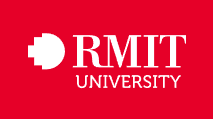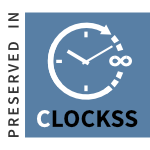Research on Mineral Inversion Method Based on Elemental Logging
DOI:
https://doi.org/10.63313/AJET.9010Keywords:
Elemental logging, X-ray diffraction, Mineral inversion, XGBoost, Conversion coefficientAbstract
The elemental data and mineral data obtained from elemental logging and X-ray diffraction were used to invert the mineral content through five methods. The oxide closure model method is based on the theoretical stratigraphic model, and the core condition of setting the sum of the mass percentages of clay minerals, carbonates, and the quartz-feldspar-mica mixture (QFM) to 100% is used for modeling and solving. The non-negative least squares method, truncated singu-lar value decomposition method, and linear programming method are based on the conversion relationship model between elements and minerals proposed by Herron. Through the analysis of the lithological characteristics of the block, the element content inversion mineral content model is established based on the matrix solution method. The XGBoost machine learning algorithm automatically learns and captures the complex relationships between samples from the data samples to solve the problem. Taking well x as an example, the mineral content was calculated through the five inversion methods. The comparison of the cal-culation results with the whole rock analysis results shows that the variation trends of each method with the depth of the stratum are basically consistent with the whole rock analysis results. Among the four mineral inversion meth-ods, the processing result of the XGBoost machine learning algorithm is the best, with a mean square error of 0.91; the processing effects of the non-negative least squares method and the truncated singular value decomposition method are second, with mean square errors of 0.88 and 0.81, respectively; the mean square error of the linear programming method is relatively low, only 0.79.
References
[1] Lei J., Wang S. S., Yang Y. Application of cuttings logging digital technology in Tarim Oil-field[J]. Mud Logging Engineering, 2017, 28(4): 1-6, 129.
[2] Huang, Q. J., Sun, J. M., & Wang, H. Q. (2019). Comparative study on multiple methods for determining mineral content by elemental logging. Well Logging Technology, 43(5), 445-451.
[3] Herron, M. M. (1986). Mineralogy from geochemical well logging. Clays and Clay Minerals, 34(2), 204-213.
[4] Sun, J. M., Jiang, D., & Yin, L. (2014). A new method for determining mineral content by formation elemental logging. Natural Gas Industry, 34(2), 42-47.
[5] Zhu, B. Y. (2019). Multi-mineral inversion with least squares method under constraints in Matlab. China Petroleum and Chemical Standard and Quality, 39(6), 158-160.
[6] Guo, R. (2017). Study on mineral calculation method of elemental capture spectroscopy logging (Master's thesis). Xi'an Shiyou University, Xi'an. Retrieved from
[7] Zhang, T. (2016). Study on the relationship between elements and magmatic rocks, sedi-mentary rocks, and sedimentary rock minerals using artificial neural networks (Master's thesis). Northwest University, Xi'an. Retrieved from
Downloads
Published
Issue
Section
License
Copyright (c) 2025 by author(s) and Erytis Publishing Limited.

This work is licensed under a Creative Commons Attribution 4.0 International License.





















